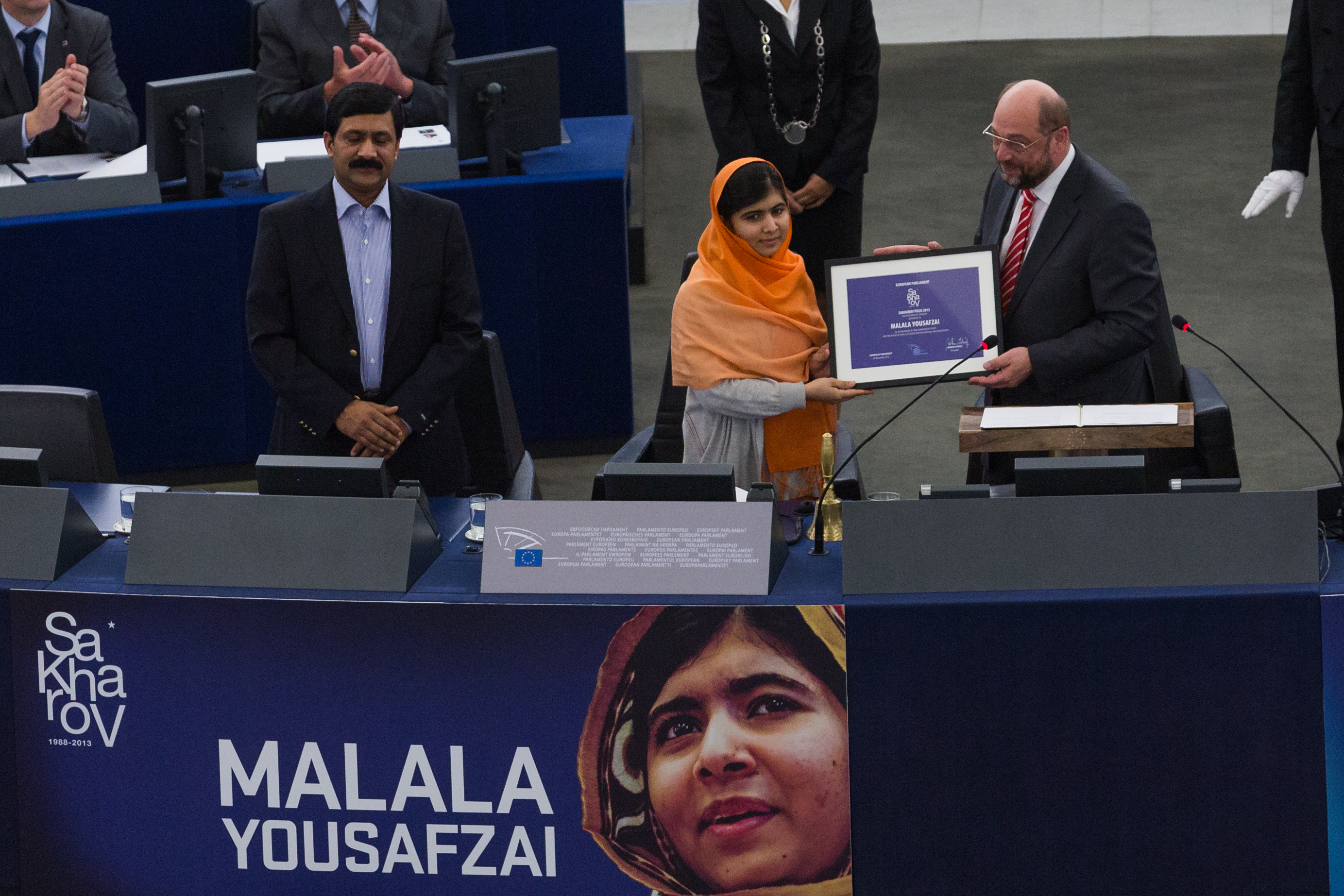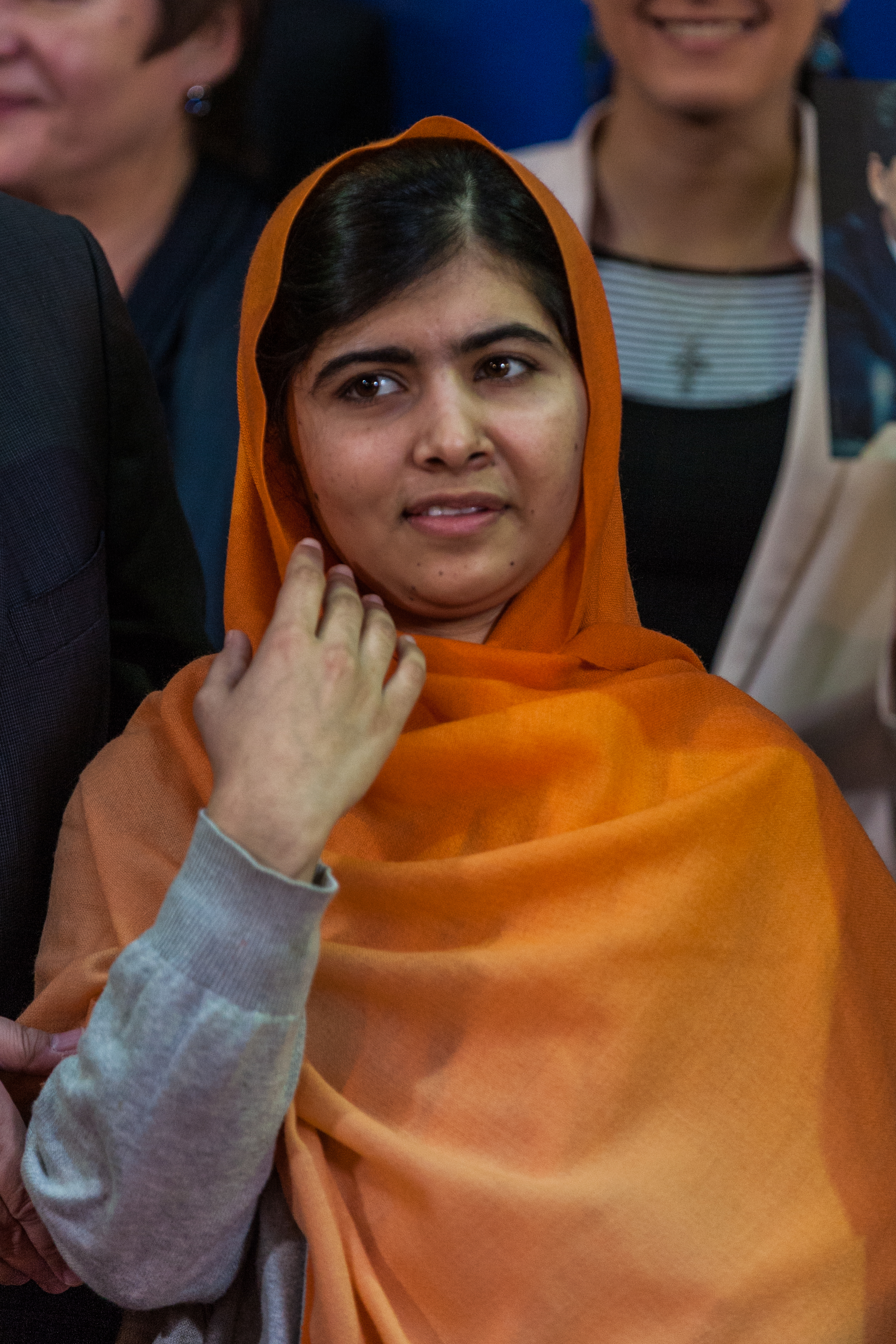
Viral Protest: online reaction to Malala Yousafzai and Berkin Elvan
In 2009 Pakistani schoolgirl Malala Yousafzai first spoke out against the austere manipulation of Sharia law, which had led to a Taliban edict banning girls’ education. She kept an anonymous blog for the BBC that recounted her struggle to continue attending school. Three years later, she was the target of an assassination.
She survived the point-blank shooting, but sustained permanent nerve damage to the left side of her face. The attack catapulted Malala to international recognition: her bravery was acknowledged in national awards, and she was presented a nomination for the Nobel Peace Prize. TIME Magazine named her one of the most influential people of 2013. Gordon Brown launched a petition for education under the slogan ‘I am Malala’, and one teenager’s voice became symbolic of a wider fight for freedom. Under the same heading, Malala’s recent biography displays a consciousness of her symbolic power, she writes: ‘When people talk about the way I was shot and what happened I think it’s the story of Malala, ‘a girl shot by the Taliban’; I don’t feel it’s a story about me at all.’

Malala’s sense of detachment from her own history shows how achieving iconic status entails a certain loss of identity. At sixteen years old she ceased to be an individual and has been immortalised as ‘a girl shot by the Taliban’. Her force as a symbol is out of her own control. Malala writes that she doesn’t want to be known as a victim of the Taliban but foremost as ‘the girl who stood up for education’. Yet continually she is misrepresented in the media. The story of ‘the girl who stood up for education’ has the potential to profoundly further her cause in the global arena, but her life and personal tragedy has instead been appropriated to advance prerogatives concerning ‘the War on Terror’. Despite global attention, Gordon Brown’s demands that no child be denied schooling by 2015 have had little impact. In Pakistan 5.1 million children still do not attend even primary school, though the constitution recognises it as every child’s basic right. Malala highlights the underlying danger of symbolic misdirection: ‘When I received prizes for my work at school I was happy as I had worked hard for them, but these prizes are different. I am grateful for them, but they only remind me how much work still needs to be done to achieve the goal of education for every boy and girl.’ The attempted assassination that brought Malala’s cause international awareness has turned her positive persona of a uniquely courageous schoolgirl into a trite political archetype, yet another victim of Islamic extremism.
Still, Malala’s case demonstrates how powerful youth protest can still be as a symbol transmitted all over the world. Visual symbols gain increasing importance in a digital age when they can reach an expansive public with great speed. Modern platforms of communication readily bypass government-allied mainstream media and state censorship in a way that is deeply threatening to traditional bodies of authority. In Pakistan, blogging allowed one twelve-year-old to share her perspective across thousands of cross-national virtual communities and become a symbol for the right to education.
Over two thousand miles away in Turkey, protesters rallied around the image of another teenager. Following the death of Berkin Elvan in March thousands of people took to the streets of Istanbul holding aloft loaves of bread. A teargas cartridge hit the fifteen-year-old the year before while he was on his way to buy bread for his mother. After months of relative silence his death sparked unrest across Turkey. While staying in Taksim Square over the Easter vacation I asked two students at Istanbul University why they thought his death had such an impact. Their responses suggested the symbolic resonance wasted youth had for the demonstrators. At his funeral the crowds had chanted ‘Berkin Elvan is our honour and he is immortal’; the boy and his loaf of bread were memorialized as symbols of police brutality and government impunity. As with Malala, the force of Berkin’s death snowballed through social networking sites. His parents announced his death on Twitter, writing ‘To our people: We lost our son Berkin Elvan at 7am this morning. Condolences to us all.’ Through Twitter, Berkin’s parents positioned his death thoroughly within the public sphere: the address was to ‘our people’ and the loss felt by ‘us all’.
Last month the Turkish Prime Minister Erdogan, leader of the religiously conservative AK Party, recognised the potency of the threat of viral protest. Erdogan banned the social media sites YouTube and Twitter after content was uploaded evidencing government corruption. Despite a court ruling that the ban is an infringement of freedom of speech YouTube will remain blocked in Turkey. The Turkish government was pressured, however, to lift the censorship on Twitter on March 26 after public outrage. While the Prime Minister claimed that by banning these internet platforms ‘everyone will see how powerful Turkey is’, the fear that stimulated the ban together with the reaction to it show just how influential Twitter is as an outlet for discontent. Social media, politics and protest have become inseparable.
It is well-documented that young people are disconnected from conventional politics. The old story goes that student mobilisation has decreased, mass protest has been extinguished, and cynicism, disillusionment and general apathy have prevailed. Yet though we face a greying electorate with estimates of an under 39% turn out of eighteen to twenty-four year olds, it doesn’t follow that we are disengaged. Taking a broader view of political participation our generation shows a lack of faith in existing political institutions, what Wring (1998) described as an ‘engaged cynicism’. When transferred to the digital sphere the picture changes. In 2005 the most rapidly growing websites, according to Nielsen//NetRatings, were the ones young people, ages twelve to twenty-four, were most likely to visit. Many of these sites had several common features: they allowed users to create and share content, while also fostering a strong social and community-based network. Such networks provide an ideal platform for viral protest, usurping mainstream engagement as the political outlet of youth.
The importance of mobilising these networks whether through blogs, sharing, virtual paraphernalia or mash up videos has already been recognised by politicians. In his 2008 campaign Obama gathered a virtual army in the Facebook group ‘One Million Strong For Barack’ with its 940,000 plus members. Social networking sites can be transformed into interactive political communities where everyone is free to express their thoughts about the candidates and participate in the process. After Obama’s success at mobilising social media sites like Facebook and Youtube, Sifry (blogosphere icon and founder of blog search engine Technorat) asked ‘Can any candidate afford to ignore Youtube in the future?’ Whether politicians attempt to suppress virtual protest or use it to their advantage, both actions show that digital content and citizen journalism have ascended. For Malala and Berkin’s family, viral protest opens up the symbolic potential around which resistance can gather.







